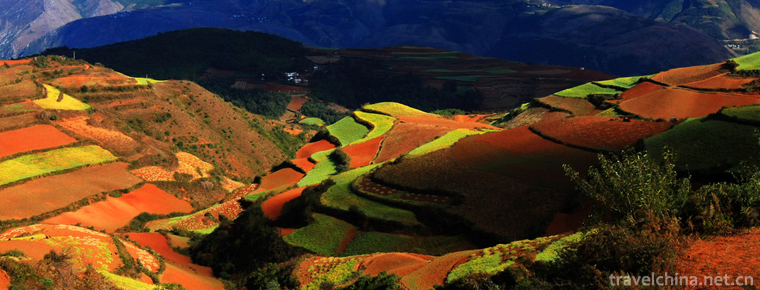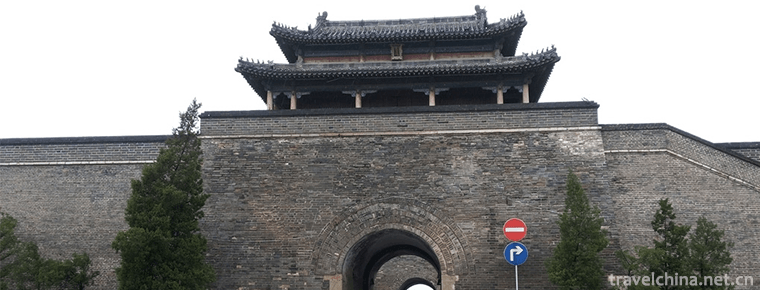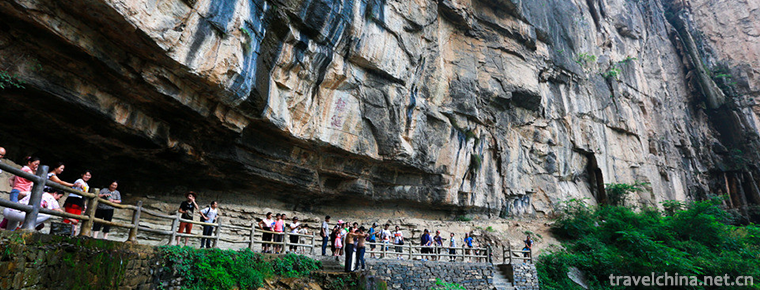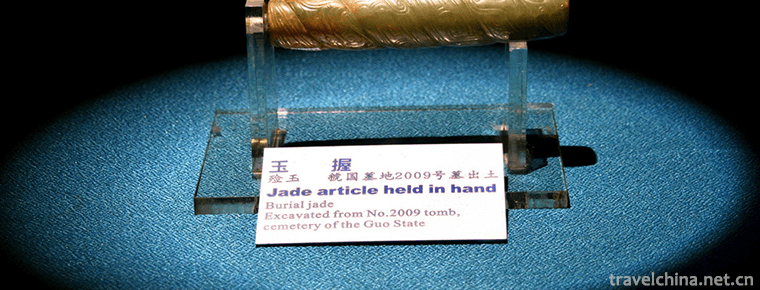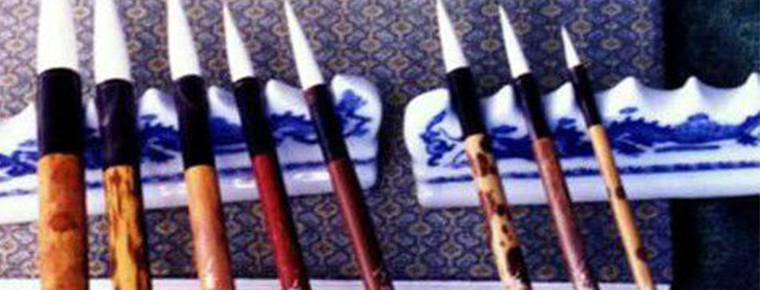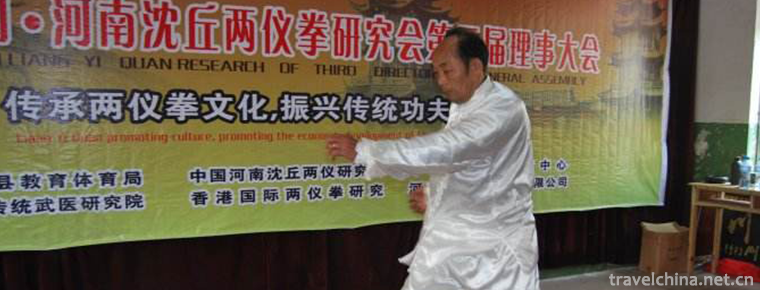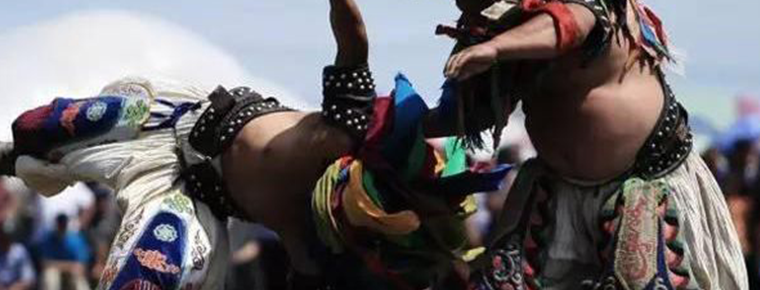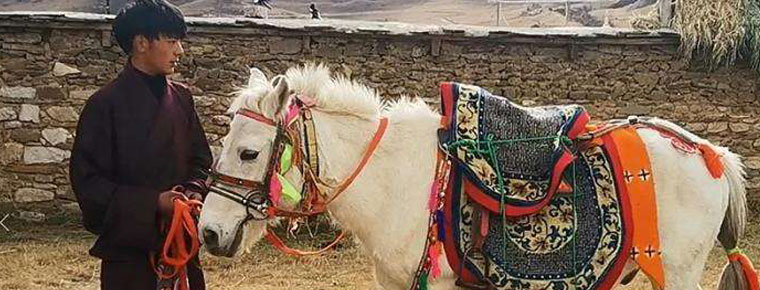stone carving
stone carving
Stone carving refers to the use of various carvable and carvable stones to create a visible and touchable artistic image with a certain space, in order to reflect social life, express the artist's aesthetic feelings, aesthetic feelings and aesthetic ideals.
The commonly used stones are granite, marble, bluestone, sandstone and so on. Stone is hard and weatherproof, and is the main material of large-scale commemorative sculpture.
In 2008, it was selected as the second batch of national intangible cultural heritage list.
Historical Origin
China has a long history. In the long Old and Neolithic Ages, stone processing was the means of making a living for the primitive ancestors in Lingnan. In Hong Kong, Macao and Zhuhai of the Pearl River Estuary, a number of rock carvings were found, mainly with complex abstract patterns, using chiseling techniques, especially in Gaolan Island, Nanshui Town, Zhuhai. The largest rock carvings are 3 meters high and 5 meters long. The carvings are clear and clear. Characters and ship carvings can also be identified from the complex lines.
According to research, the rock carvings were made in the Bronze Age around 1000 BC. There are many octagonal prismatic stone balustrades with square foundations found at the site of the Royal Palace Office of South Vietnam, which is the earliest known stone balustrade component in the history of Chinese architecture. The imperial court site in South Vietnam is the first site of Qin and Han Dynasty in China, where stone slabs are used as ice crack paved stone pools, winding stone canals, huge stone chambers and various stone components.
The Tomb of Zhao Wu, king of South Vietnam, is the largest stone chamber tomb in Lingnan, which weighs 2.6 tons. 244 pieces (sets) of jades unearthed from the tomb, including 71 pieces of jade walls, two pieces of green and white round carved dancers, one piece of blue and white carved horn cup with relief moire, silk-carved jades, dragon-tiger jade belt hooks, dragon-phoenix double-ring jades and beast Title walls, are exquisite treasures, reflecting the high level of processing jade at that time. It can be seen that South Vietnam has mastered the preparation and construction of jade. Type, drilling, cutting, polishing, refitting and mosaic technology. In the Nanyue King's tomb, talc ovens, ear cups, pigs, pillows and stone inkstones were also found. Skate and grinding fine stone axe, etc. It shows that stone carving is also an important craft.
From the origin of human art began the history of stone carving. It can be said that up to now, none of the all-embracing art forms of human beings can be more ancient than stone carving, and none of them can be skilled craftsmen. It is more popular and everlasting.
The history of stone carvings can be traced back to the middle Paleolithic Age, about 1.2 million years ago. Since then, stone carvings have been handed down to this day. In this long history, the creation of stone carving art has been constantly updated and improved. In different periods, stone sculpture has great changes in types and styles; different needs, different aesthetic pursuits, different social environment and social systems are restricting the development and evolution of stone sculpture creation. The history of stone carving is not only the history of art, but also the history of rich cultural connotations, but also the vivid and real history of mankind.
Stone Carving in Pre-Qin Period
Around 10,000 years ago, the primitive ancestors said goodbye to the economy of collecting and hunting, ended their wandering life and turned to the Neolithic era, where they settled down. People began to live in settlements dominated by farming and animal husbandry. When the primitive people said goodbye to the collection and hunting environment of mountain forests and migrated to the banks and hills of Pingyo River, the vivid hunting art of the past was no longer reappeared. It is found that the patterns of painted pottery in the Neolithic Age are usually concise, abstract, deformed and even geometrically formalized animal ornaments. Therefore, in the areas where the Neolithic Revolution is booming, the stone carvings have retreated to the second place or even disappeared.
The ancestors of the Neolithic Age in China, about 10,000 years ago, had been able to make pottery, but only about 7,800 years ago did they begin to enter the era of painted pottery. In contrast, the technology of grinding stone tools invented by ancient Chinese people was used in the late Paleolithic Period. Stone ornaments of cave dwellers on hilltops were made by cutting and piercing. This is a milestone in the history of ancient Chinese sculpture, because only the invention of grinding technology can stone become an unconquerable carving material for human beings.
During the period of Peiligang and Yangshao cultures, the glacial period of China ended, which was very suitable for human survival and development. The settled peasants are happy to know their destiny and weave a song of peace in peace. They make all kinds of pottery. They like to adopt abstract, concise, generalized fish pattern and various geometric patterns for decoration. People's understanding of the beauty of form has greatly expanded, and plastic arts have also expanded to various fields of sculpture.
The early stone sculptures of the Neolithic Age in China can be represented by the stone mills and grinding rods of Peiligang culture. It is made of sandstone. Its appearance is designed to be shoe sole geometry. It is neat and generous. Its center of gravity is stable. Its processing is very difficult. It needs beating, cutting, polishing and dressing. It involves various basic techniques of stone carving. Compared with all kinds of grinding stone tools at the same time, it has a more formal sense. It is not only a faithful record of primitive people's productive labor, but also reflects a higher aesthetic value. This kind of stone tool, which embodies the dual nature of labor, is often placed beside the deceased as a funeral object. It is the religious appeal that prompts the artist to create this rare stone sculpture.
However, in the Quanshi Age, pottery sculpture was always the mainstream of sculpture because it was easy to shape and materials were available everywhere. Until the invention of iron, stone carvings were still rare works of art, so we have to turn our attention to stone carvings.
Rock carvings, in suitable conditions of the border areas, are still the main form of original artists'creation, and enduring. For example, there are many Neolithic works in Yinshan rock paintings. The expressive style of Yinshan rock painting has a profound and tremendous influence. In fact, most of the rock paintings created by the ancient nomads in the north and northwest of China belong to chiseled stone paintings, whose origin should be traced back to Yinshan rock paintings. In addition, hunting and animal description are always eternal themes. The pictorial characters in the bronze inscriptions of Shang and Zhou Dynasties, the realistic patterns of the bronze wares of the Warring States Period and the figure hunting pictures of the bricks of the Qin Dynasty are all extensions of this technique, but the latter is becoming more and more precise, formal and rhythmic. Thus, the abstract generalization and exaggeration of the black shadow technique can best reflect the aesthetic ideal of Chinese classical art that does not resemble each other and pursues vivid and vivid charm.
In addition, the line carving, another source of Chinese ancient stone carving techniques, also appeared in the Neolithic Age. The stone sculpture found in Jiangsu Lianyungang General Cliff is believed to have been carved by the primitive ancestors at the end of the Neolithic Age. This form of line carving stone carving has been widely used in the creation of stone carving in past dynasties.
Although there are not many stone carvings unearthed in the Neolithic Age, their style is not simple, but totally different from that of stone carvings and rock paintings. Several talc sculptures from Houwa, Donggou, Liaoning Province, are all round figurines. The knife method is rough and crude, and the image is simple and vivid, which indicates that they are symbolic works.
Despite its naive and abstract expression, the stone sculpture of the human head did not mean that the sculpture technique was low at that time. For example, the relief face of Daxi culture adopts the technique of grinding, and its image also has an invisible religious power. Obviously, the sculptors at that time focused their main energy on the creation of jade carvings. Because we have seen many exquisite jade carvings and small stone carvings in Hongshan culture and Liangzhu culture.
Jade dragon of Hongshan culture is a rare masterpiece. It is made of Xiuyan jade with high hardness. This is the proof of the application of stone carving techniques to the creation of jade carving. As we all know, in ancient sculptures, the material of jade and stone is very difficult to distinguish, and there are only relative views in the criteria of expert collection and classification. But one thing we can confirm is that in the Stone Age and the Bronze Age, the ancient sculptors treated jade and stone equally. So in Hongshan culture and Beiyin-Yangying culture, we saw fish-shaped stone pendants and rainflower stone decorations coexisting with the five carvings.
On the other hand, primitive artists also applied their skills to the field of practical tools processing, making pestles, mortars, grinding pans and various stone farm tools, as well as carving tombs and stone panels of stone chamber type. Especially the emergence of the latter has a very important position in the history of Chinese ancient stone carving art. The late Neolithic stone shed, discovered in Haicheng, Liaoning Province, is one of the masterpieces.
In the late Paleolithic Age, the megalithic architecture is a simple combination of natural megalithic stones without carving. It appears stable and powerful, and is the product of the original megalithic worship that makes people transcend the world. It was once prevalent in the Eurasian grasslands, then spread to the East Asian continent, no country into the era of civilization, in the border areas can still find its remains. In the form of stone shed in Liaoning sea area, the stone slabs have been carved into regular geometry, the artificial force has been strengthened, and the natural force and religious spirit have obviously weakened. It should be the end of the megalithic building. This stone shed building is thought to be a tomb. In the minds of prehistoric people, boulders were usually regarded as the dwelling places of souls or gods, so they were often used as boundary stones, coffins or objects of religious worship.
Up to now, archaeological discoveries of Neolithic stone carvings can be roughly divided into several categories. The first category is traditional stone carving, including traditional typical fine stone tools and small ornaments; the second category is grinding practical appliances, including daily necessities, utensils and production tools, weapons; the third category is religious idols; the fourth category is animal stone carving and carved rock with a breath of life. Among them, utensils and animal stone carvings can best represent the highest level of stone carvings at that time. Later, we could see many realistic and fantastic animal sculptures in the tombs of Fuhao in Shang Dynasty, which can not but be attributed to the stone carving tradition of Neolithic Age, which is keen to eulogize natural life.
In addition, we can also get a glimpse of the beauty of the artistic language of geometry from the practical implements created by the ancestors of the Neolithic Age.
Facts show that the stone products of the Neolithic Age, such as tools of production and weapons, all have points, lines and contours that can arouse people's visual aesthetics. In modern decorative forms, they constitute an unprecedented system of geometric artistic language.
Without rules, it is not enough to form a square circle, which is the most essential observation and experience of the ancient aesthetic sense of form. Therefore, the early Chinese hieroglyphics were exquisite graphics composed of square and circle lines, joints and strokes. This hieroglyph is an artistic creation that combines language and writing with aesthetics. In fact, it has the same origin as the geometric shape of the original stone carvings.
Ancient human beings created geometric images such as points, lines, squares and circles while creating living utensils. If we carefully browse the typical stone products of the late Neolithic Age, we can't help but admire how ancient ancestors could have such superb modeling skills. Although iron chiseling tools have not yet been invented, they have been able to reflect the objective reality of the object with the most generalized points and lines. The shapes and lines of these objects are so beautiful, so symmetrical and precise. Ancient ancestors have fully understood that the most beautiful form is also the most convenient and practical device type.
Stone Carving in Shang Dynasty
Following Erlitou culture, Erlitou culture represents the relics of the middle Shang Dynasty. At that time, stone production still occupied an important position. At that time, a variety of pottery products were prevalent, but rarely noticeable stone carvings. Until the Yin Ruins Culture Period, entering the peak stage of the Chinese Bronze Age, the stone carving art again blossomed brilliantly.
The famous figure statues of the late Shang Dynasty include the remains of the mortar from No. 1004 tomb in Houjiazhuang, Anyang, and No. 376 stone man from Fu Hao tomb in Yin Ruins. These characters are carefully depicted and their hair styles are clearly distinguishable. They are the direct manifestation of social life by ancient sculptors, thus leaving a model for future generations to observe.
In Shang Dynasty, the primitive religious view of animism prevailed, and animals were also gods worshipped by people at that time. Therefore, stone carving artists were especially good at representing various animal worlds. Large animal stone carvings are mostly found in Anyang Yin, Wang Du. The stone duck unearthed in Houjiazhuang is a recreation without sticking to its original shape. Its pointed beak and prominent eyes vividly depict the intrinsic characteristics and fierce personality of the raptor. The rest of the details are omitted. The thicknesses of its lower feet are different in order to support balance and avoid monotony. The feathers and wings of the duck are represented by lines carved in the round sculpture. The method of incorporating pattern decoration into Shang Dynasty sculpture is a remarkable feature of its unique style, which is different from that of prehistoric sculpture.
Stone Carving in Tang Dynasty
Tang Dynasty sculpture is the highest peak in the history of Chinese sculpture, which is still divided into two categories: mausoleum stone sculpture and Buddhist stone sculpture.
Buddhist sculptures in the Tang Dynasty are still mainly grotto statues. In addition, a few plain Buddhist temples and small Buddhist statues have been preserved. The statues of the Tang Dynasty are represented by the statue of Fengxian Temple. It is magnificent, full and round. It strongly reflects the characteristics of the Tang style, and takes the Dunhuang painted sculpture as the main body and essence, with a large quantity, rich content and high artistic level, which is incomparable to the statues of the past dynasties. The statues of the Tang Dynasty have become independent round sculptures, mostly group statues, sitting in the middle of the Buddha, with disciples on both sides of the Bodhisattva. King of Heaven and Lishi echo from afar. The statue is almost the same size as the real person. It makes people feel that they are personally communicating with Buddha and are close to people.
The grottoes of Tang Dynasty include Tianlongshan Grottoes and Bingling Temple Grottoes. The statues are full and moving, graceful, showing the secularization of Buddhist art in Tang Dynasty.
There are few color sculptures of Buddhist temples in the plain of the Tang Dynasty. There are color sculptures of Buddhist temples in Shannan Shansi, Wutai Mountain, Shanxi Province, which are almost identical with the style of color sculptures in Dunhuang Tang Dynasty. Small Buddha statues are still mainly made of stone carving and bronze casting. Their artistic style is the same as that of grotto statues. They all show the graceful style of Tang Dynasty, among which the level of stone carving art is very high.
Mausoleum sculptures in the Tang Dynasty are still divided into two categories: pre-mausoleum sculptures and small Taoyong in the tomb. The large statues in front of the mausoleum are mainly distributed near the mausoleums of the Tang emperors in Guanzhong area of Shaanxi Province. There are tall stone men and horses on both sides of the Shinto in front of the mausoleum, with magnificent momentum. Among them, the most influential ones are the stone carvings of Xianling, Zhaoling, Qianling and Shunling.
Tang Dynasty's sculpture combines the characteristics of China, foreign countries and the North and South, and reaches the peak of maturity, which sets a glorious model for later sculpture art.
Architectural Stone Carvings in Ming and Qing Dynasties
The Ming and Qing Dynasties were the last cycle of the Chinese feudal society from turmoil, recovery, prosperity to collapse. At that time, the architectural art developed along the traditional analysis of classical art, thus forming the last peak in the history of Chinese ancient architectural art.
The scale of palaces and Mausoleums in Ming Dynasty is very grand, and the art of architectural stone carving in Fuli has also made many innovative achievements. The Imperial Palace Gardens of the Qing Dynasty surpassed those of the Ming Dynasty in scale and quality.
Stone carving Huabiao has existed since ancient times, but Bai Shihua Biao of Tiananmen in Ming Dynasty has its own characteristics and artistic achievements. It is an unprecedented architectural decoration shaped by a variety of sculpture techniques. The main dragon pattern of the Huabei pillar body is depicted by shallow relief carving concealed from the ground. The dragon shape is curved and upward, with cloud decoration between, which makes the Huabei magnificent and solemn. Its pillar head is decorated with colorful carved clouds, and the lotus petal stone plate is decorated with round lions. There are also magnificent octagonal seats, surrounded by delicately carved dragon-grain fences and carved pillars with lions. Looking at the overall shape of Huabiao, it is a sublimation on the basis of traditional forms. At the same time, we also see that Huabiao is in essence a perfect symbol of the combination of Chinese and Western cultures.
In fact, the main palace of the Palace Museum, the steps, railings, walkways, atriums, stone bridges, are all an organic combination of various stone carving art forms. These stone carvings were re-carved after the original Ming Dynasty decorations were chiseled out in the twenty-fifth year of Qianlong. However, from the existing stone railings decorative patterns, we can still see that the Ming and Qing Palace Museum stone carvings still inherited the decorative patterns and techniques since the Song and Yuan Dynasties. Looking at the palace gardens of the Ming and Qing Dynasties, the extensive use of stone carvings can be said to be beyond replication. They eloquently reflect the fact that the best and greatest buildings in the world can not be separated from stone carving decorative components. In the imperial gardens of the Qing Dynasty, Yuanmingyuan is a great garden known as the "Garden of Wanyuan". It is sad that it was burned in 1860 at the hands of the aggressive coalition forces of the eight countries. Today, from the ruins of the garden, we can still peek at some of the features of this superb ancient and modern garden architecture art.
There are numerous examples of stone carving art widely used in Ming and Qing architecture. As is known to all, the Temple of Heaven in Beijing was a place where emperors of Ming and Qing Dynasties offered sacrifices to heaven and prayed for good years. The bases, white stone altars and stone components under the main buildings were carved with very beautiful decorations. They were all created under the control of the imperial government to meet the needs of feudal rule and luxurious life, which is also reflected in the mausoleum architecture. Nowadays, a large number of tomb carvings of Ming and Qing Dynasty are preserved in the Imperial Mausoleums of Fengyang, Anhui, Ming and Xiao Mausoleums of Nanjing, the 13th Mausoleums of Beijing, the Eastern Mausoleums of Qing Dynasty in Zunhua, Hebei, and the Western Mausoleums of Qing Dynasty in Yixian County, Hebei
Distribution of origin
Liuyang, Hunan
Liuyang belongs to Changsha City, which is located in the north of Eastern Hunan Province and adjacent to Tonggu, Wanzai and Yichun in Jiangxi Province in the east; Pingxiang in Jiangxi Province and Liling and Zhuzhou in Hunan Province in the south; Changsha in the capital of Xiyi Province in the west; Pingjiang in Yueyang City in the north. Liuyang in ancient times belonged to Jingzhou, named for its county seat in Liushui Yang. In the 14th year of Jian'an in the Eastern Han Dynasty (209 AD), Zhou Yu, the general of the Eastern Wu Dynasty, was one of the "salaries". From this we can see that Liuyang Jianxian County has been 1790 years. Liuyang is a famous "town of generals" and "town of fireworks". The popular dialects are Liuyang dialect, Changsha dialect and Hakka dialect.
Because of the intense geological movement in the shallow sea 270 million years ago, some submarine mud and marine organisms penetrated deep into the crust. After hundreds of millions of years of high temperature and high pressure condensation, they evolved into biofossils, forming a unique natural chrysanthemum mineral in the world. At the end of last century, this precious resource was found and developed in Liuyang River, Hunan Province. Its stone is rich in color, tough and delicate, and contains trace elements such as strontium and selenium which are beneficial to human body, which highlights the rarity of chrysanthemum stone.
Huian, Fujian
Hui'an, located in the middle of southeast coast of Fujian Province and across the sea from Taiwan, is one of the famous overseas Chinese townships in Fujian Province and the main ancestral places of the Han compatriots in Taiwan. It belongs to Quanzhou City, with a population of 930,000 and an area of 668 square kilometers. It is ranked among the top 100 counties in the national economy. It has been awarded "Town of Chinese Folk Art (Sculpture) by the Ministry of Culture" and "Capital of Chinese Stone Sculpture" by the Chinese Arts Huian carving art has a long history. It originated from the carving art of the the Yellow River River Basin, which integrates the Central Plains culture, Minyue culture and marine culture. It draws the essence of the Jin and Tang Dynasties, the charm of the song and Yuan Dynasties, and the demeanor of Ming and Qing Dynasties, and forms a delicate and delicate southern style of art. It is a wonderful flower of Chinese traditional culture. Huian stone carvings are divided into round carvings, relief carvings, sunken carvings, shadow carvings and other major categories. Immersed sculpture is mainly used for the decoration of building walls and stele pagodas, archways, cliff stone carvings, plaques, couplets of houses and roofs, etc., with the line as the main feature, requiring strong and smooth lines. The representative works include the large stone carvings of the Nanjing Rain Flower Platform Memorial Hall "The Sun and Moon Bright". Embossment refers to the image projected on the surface of stone, used for stone decoration of large-scale Memorial buildings, high-grade houses and houses. Its representative works are Huabiao of Nanjing Zhongshan Mausoleum in the early years of the Republic of China, Golden Fish Pool of Guanghua Pavilion, etc. Carving enterprises.
Wenling, Zhejiang
Wenling is one of the four largest stone carvings in China. The culture and history of stone carvings have a long history. Starting in the Song Dynasty at the earliest, the stone carving craft had been flourishing for a while during the Jiajing period of the Ming Dynasty. Taizhou folk once spread the ballad "Huangyan orange Yandang pine, Taiping stone rooftop clock". There are more than 40 stone carving enterprises in Wenling City, and nearly 2000 stone carving artists are employed, of which 80% are Gaolong stone carving artists. The rise of stone carving industry has become another new growth point of economic development in Wenling City.
In order to jointly create the stone carving Market and maintain the prosperity of the industry, the government of Kaolong Township in Wenling City has set aside 30 mu of land in Pusancun and concentrated more than 30 stone carving enterprises in the whole town to establish the Kaolong Stone Carving Park. The government is responsible for supporting facilities of water, electricity, roads and other parks, formulating preferential policies, and implementing tax and electricity preferences, thus making the stone carving industry a pillar industry in the township, accounting for more than half of the industrial output value. Faced with the coming new century, Wenling people constantly improve the scientific and technological content of stone carving process, introduce and apply advanced technology to transform traditional stone carving process, and begin to adopt a new method combining computer engraving design with manual carving to produce some high-grade and popular stone carving crafts.
Qingtian, Zhejiang
Qingtian is a famous town of stone carvings, a key hometown of overseas Chinese in Zhejiang Province, a hometown of celebrities and a cultural capital. Qingtian has excellent ecological environment, numerous scenic spots and historic sites, and beautiful natural scenery. We warmly welcome you to visit Qingtian Stone Carving Culture.
Jiaxiang, Shandong Province
Jiaxiang stone carving is exquisite in skill and unique in style. It is a fine tribute to the court by the government of successive dynasties. These stone carvings are mainly made of celestite, marble, white marble and other famous precious stones. They are exquisite in material selection, exquisite in workmanship, different in specifications and various in variety. They are mainly good at carving dragon pillars in Longting Pavilion, jade Pavilion in Qionglou, birds and animals, figure flowers and plants, and antique-imitating utensils. They can be divided into four categories: round carving, line carving, relief carving and flat carving. They have both ancient artistic charm and elegance, lightness and rapidity. The modern artistic style enjoys the reputation of "skillful work of heaven" and "rock breaking astonishing heaven" at home and abroad. In 1996, Jiaxiang was named "the hometown of Chinese stone carving" by the state.
Quyang, Hebei Province
On the 4 kilometer long carving road in Quyang County, Hebei Province, millions of animal stone carvings, such as stone lions, stone horses with elegant manes and giraffes, are vivid, like walking into a "wildlife park". Walking on the carving exhibition square, there are nearly 100,000 stone carvings, jade carvings, landscape stones, stone carvings and other products, and they seem to be in full view. "Yulin Shihai". Yao Minzhe, deputy director of the sculpture industry management office in Quyang County, said that the scale of Quyang stone sculpture had begun to take shape in the Western Han Dynasty; in the Tang Dynasty, Quyang became the birthplace and sculpture center of white jade sculpture in the Northern Han Dynasty; and in the Yuan Dynasty, Quyang stone sculpture reached its peak. From Yungang Grottoes, Leshan Buddha, Dunhuang Grottoes, Wutaishan Buddha Statues, A Fang Palace, Forbidden City, Yuanmingyuan Palace, Summer Palace, to Jinshuiqiao, the Great Hall of the People, the Monument to the People's Heroes, Chairman Mao Memorial Hall and other buildings in front of Tian'anmen, the sculpture art of Quyang people is left everywhere.
Puli, Taiwan
Nantou Puli Town, located in the central part of Taiwan Island, is famous for its stone carvings, water quality and alcoholic liquor. Beautiful women are the four most famous ones in Puli Town. The iron pill stone carvings, the top ten elegant stones in Taiwan, are produced in Puli with beautiful scenery. Purid Shaoxing Wine is famous all over the world and is also a gift of good water quality. The unique natural conditions make the town rich and everybody rich. Attracted by the pure and peaceful life of Puli, more and more artists have taken root here, creating a strong local humanistic temperament, a variety of handicraft flowers blossom, especially the most prosperous stone carving, iron pill stone carving is one of the most important.
The best marble is formed at 4000 meters or deeper seabed, and its density, gloss and iron content are the best. Because of the particularity of its forming conditions, this kind of high-quality marble stone is especially precious, accounting for less than 2% of the total output of marble stone in Taiwan. Iron pill stone carving is a fine selection of iron pill stone carved from fine stone, its stone can be called root is seedling red. Iron Pillar Stone was formed about two million to more than twenty million years ago. It was very rare. Because its stone core is black and gray, and the color of stone skin is heavy as iron, it is called "iron pill stone". Iron pill stone has a higher density and texture than ordinary stone. It is superfine and warm. It is like the natural beauty of ancient beauty Xishi. It is also called "Xishishi stone".
Puli iron pill stone carving adheres to the artistic characteristics of meditation, elegance and agility. While maintaining the beauty of nature, it provides outstanding stone carvings for home decoration, personal collection and gift gift giving. There are two series of stone carving products, one is "One Corner Chan" and the other is "True Love Shiyi". The products are both ornamental and gift-giving. With a refreshing theme and style, they inject a fresh thread into the traditional Chinese craft and gift industry.
Dashiwo Stone Carving
Dashiwo Town, Fangshan District, Beijing, has abundant stone resources with excellent quality and many varieties. The development of stone can be traced back to Yanshi in the Warring States Period, which has a history of more than two thousand years. Hanbaiyu, which is clean and easy to carve, is a national treasure in building stones. The stones used in palace buildings such as Beijing Palace Museum and royal gardens such as Yuanmingyuan Palace and Summer Palace are mostly collected from Dashiwo. After the reform and opening up, the Han Baiyu carving and stone processing in Dashiwo Town have made great progress. Stone carving technology has been widely used in modern architecture, not only exported to all parts of the country, but also exported to many countries and regions in the world. Because of the nurturing of stone carving culture, Dashiwo has won the reputation of "the home of stone carving art", "the home of painting and calligraphy", "the home of Chinese folk art". Among them, the stone carving of Liu family, a famous stone carving family in Shiwo, is well received. In August 2004, the National Development and Reform Commission listed it as a small town with national stone carving industry characteristics.
Huian Stone Carving
In the Ming Dynasty, many people in Hui'an were qualified as Jinshi. There were many archways and many graveyard stone carvings. The ancient city of Chung Wu was built in the early Ming Dynasty. The relics include the generals, horses, tigers and sheep of the tomb of Zhang Yue, the stone lions of Town God's Temple, and so on, all of which symbolize the higher level of stone carving at that time. However, the ancient Chongwu city in the Ming Dynasty was destroyed, and the stone city was rebuilt in the Qing Dynasty.
The Qing Dynasty was a period of great development of Hui'an stone carvings. The artistic style tended to be exquisite and meticulous, paying attention to the beauty of line structure and form and charm, which formed the southern style of Hui'an stone carvings. This period is a link between the past and the next in the history of Hui'an stone carving development, and also a period when stone carving workers began to develop outside Hui'an. In addition to other parts of the province, overseas Chinese and businessmen have also developed to Singapore, Indonesia and Malaysia. Since the Sino-Japanese War of 1894, there has been a great building boom in Taiwan. Many Hui'an craftsmen were absorbed to Taiwan to participate in stone carving processing and production, and many people lived in Tai'an. The stone carving skills brought by Zhang Yun became an important medium for the relations between Fujian and Taiwan. After liberation, Huian stone carving technology has gained new development. The construction of Jimei Aoyuan Garden in 1960s, the Great Hall of the People in Beijing, Chairman Mao Memorial Hall in 1980s, Bayiyi Memorial Hall in Nanchang, Yuhuatai Memorial Hall in Nanjing, Mazu statue in Meizhou Island and Zheng Chenggong statue in Xiamen all devoted a great deal of effort to Hui'an stone sculptors.
Since the economic opening up in 1979, especially after the first sculpture festival, Hui'an stone carving has injected obvious elements of modern art into it, blending with the sculpture art and injecting new vitality. Especially new standards, new ideas and new perspectives. Hui'an stone carving art has become the growth point of the county's economy. In 2003, the direct and indirect value of county carving was 10 billion yuan, and the export earned 6 billion yuan. It was finally awarded "the hometown of Chinese sculpture" by the Ministry of Culture.
Inheritance Significance
The comprehensive value of stone carving culture and art is very high, because of its particularity, a considerable part of it is group carving. And the soul is given by the sculptor or designer. It reflects social life and artists'aesthetic feelings, feelings and ideals.

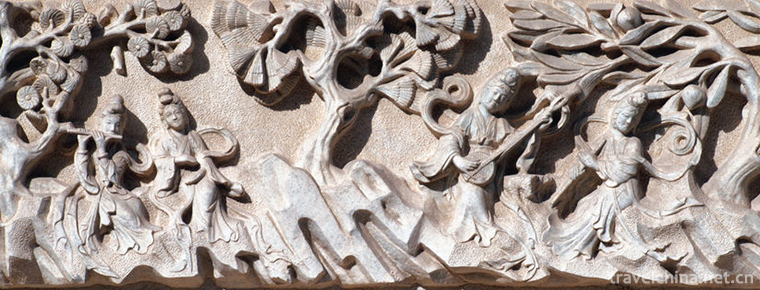
-
Dongchuan Red Land Scenic Area
"Dongchuan Red Earth" is located in the north-east direction of Kunming.
Views: 154 Time 2018-10-21 -
Ancient Huizhou Cultural Tourism Zone
Huangshan Ancient Huizhou Cultural Tourist Area is located in Huangshan City, Anhui Province, north of Huangshan Mountain, south of Qiandao Lake.
Views: 157 Time 2018-12-08 -
Qu Fuming Gucheng
Qufuming Old Town: World Cultural Heritage, one of the three holy cities in the world, national AAAAA tourist attractions, National Scenic spots, national key cultural relics protection units, one of .
Views: 170 Time 2018-12-08 -
The Wanxian Moutain
Wanxianshan Scenic Area is located in the hinterland of Taihang Mountain in the northwest of Huixian City, Henan Province. It belongs to Nantaihang Tourism Resort, Xinxiang.
Views: 217 Time 2018-12-17 -
Kuanguo Museum
The Kuanguo Museum is a special museum built on the site of the Kuanguo Cemetery in the Western Zhou Dynasty, a national key cultural relic protection unit. It covers an area of 100,000 square meters.
Views: 206 Time 2019-01-13 -
Craftsmanship of Lake Pen
Hubi craftsmanship, the traditional handicraft of Shanlian Town, Huzhou City, Zhejiang Province, is one of the national intangible cultural heritage..
Views: 192 Time 2019-05-03 -
Jieshou Book Club
The first book of the world will be a national list of intangible cultural heritage. Miaohu Book Club in Jieshou City is a unique bonsai project in its culture and art..
Views: 111 Time 2019-05-06 -
Two instruments boxing
Liangyi Quan originated from Zhouyi, which said, "It's so easy to have Taiji. It's the birth of Liangyi". (Liangyi Quan) is also called Liangyi Point-through-Qishen Quan. Its name is formed .
Views: 166 Time 2019-05-13 -
Nadam
Nadamu is Mongolian, also known as Nair. Nadamu is a Mongolian transliteration, meaning "entertainment, games" to express the joy of harvest. The Nadamu Congress is a traditional festival wi.
Views: 73 Time 2019-06-06 -
Can Ding Zhens Pony pearl really run first
Recently, after the exposure of Ding Zhen's Pony pearl, many netizens have a question in their hearts: "can it really run first?"? After the news release, netizens have been hotly debated. The specific contents are as follows:.
Views: 131 Time 2020-12-07 -
Hydrology of Neijiang River
Tuojiang River is the main river in the urban area. It flows through Zizhong, Dongxing and Shizhong District. It is the main waterway transportation route in the city. Since ancient times, there has been a busy scene description of "boats of ten thousand trees.
Views: 299 Time 2020-12-16 -
Population of Yibin
By the end of 2019, the total registered residence of Yibin was 5 million 515 thousand, 8 thousand less than the end of last year, and the registered residence population urbanization rate was 37.87%, which was 2.28 percentage points higher than that .
Views: 147 Time 2020-12-18
